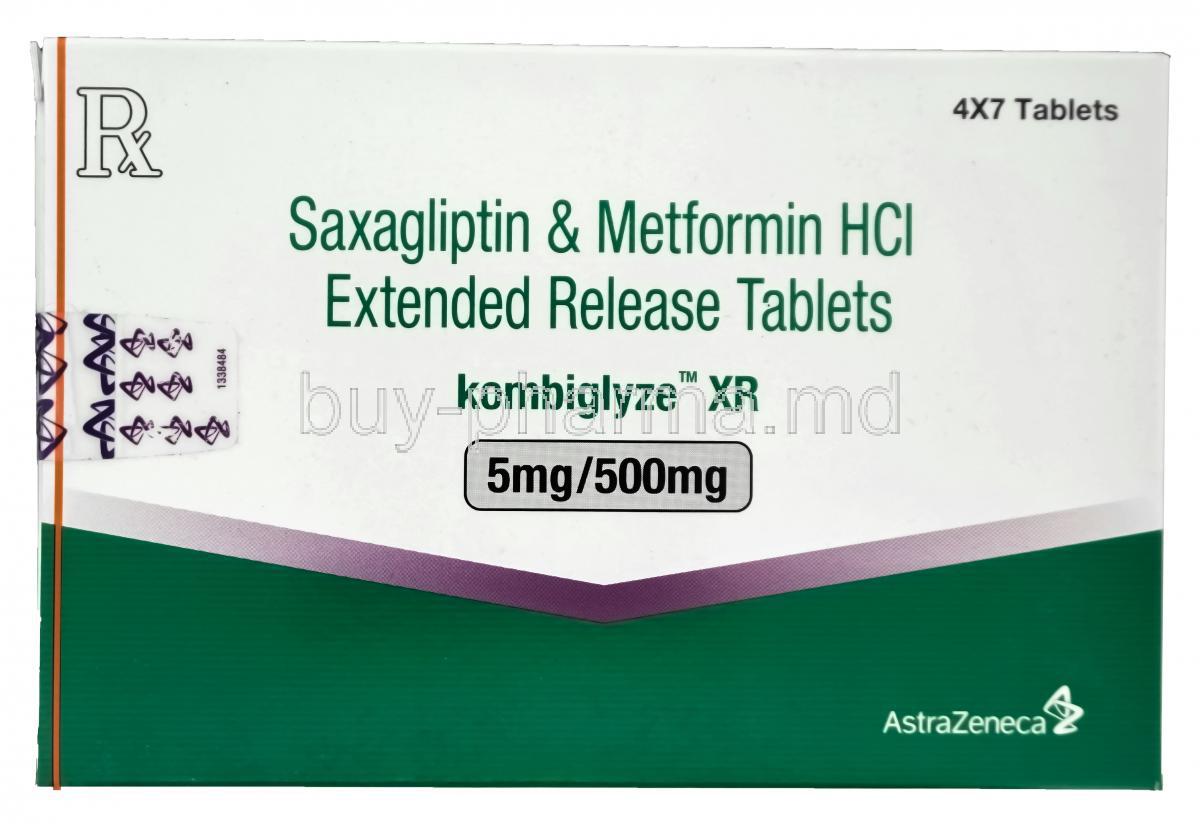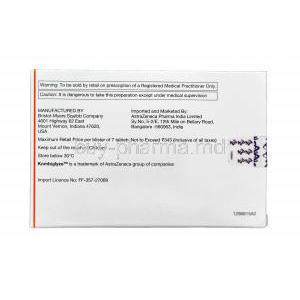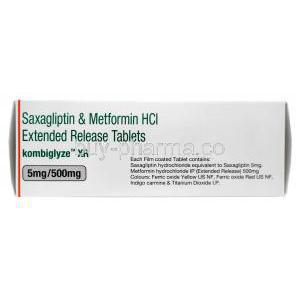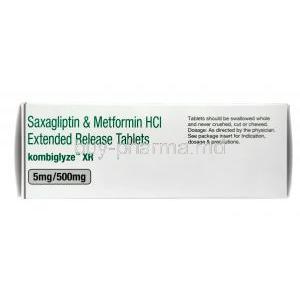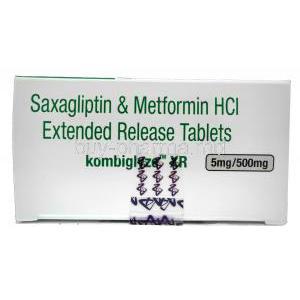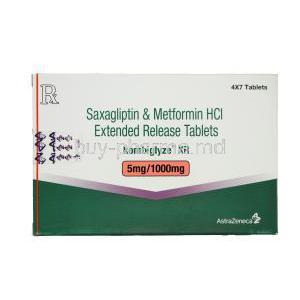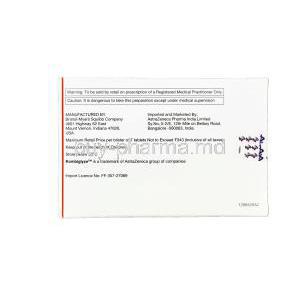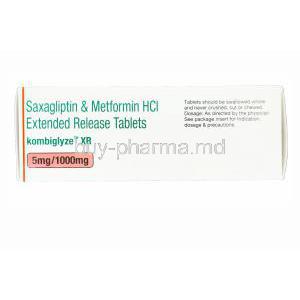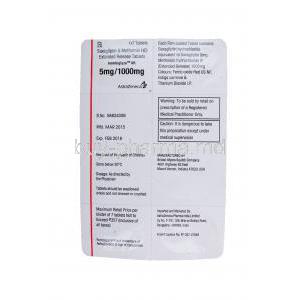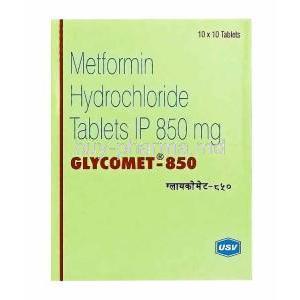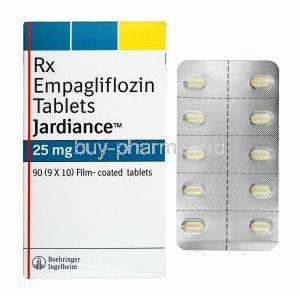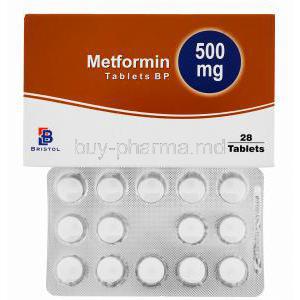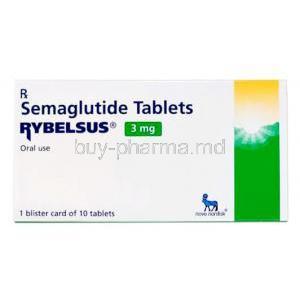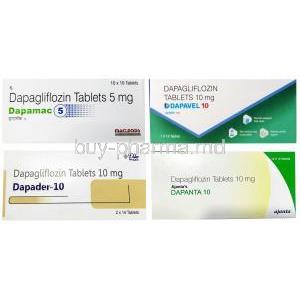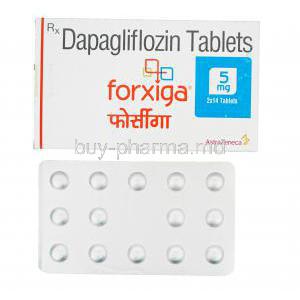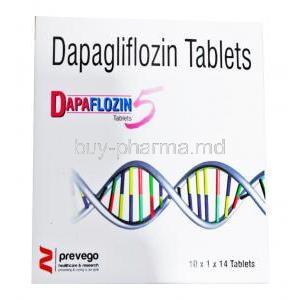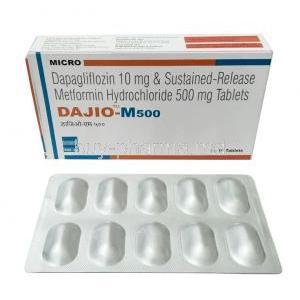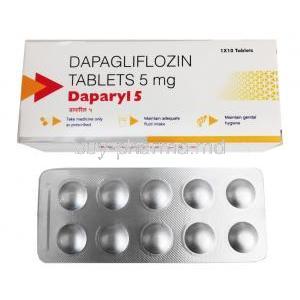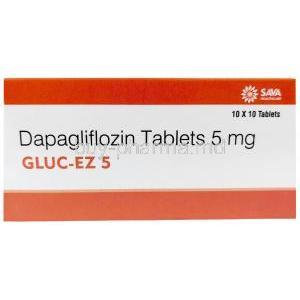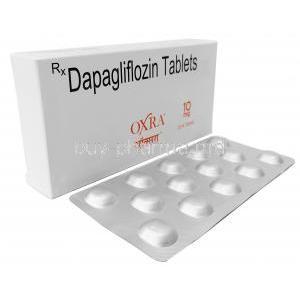1. Introduction to Kombiglyze XR
Kombiglyze XR is a potent, once-daily extended-release oral medication formulated for the management of type 2 diabetes mellitus. It is engineered to deliver sustained glycemic control over 24 hours, making it a vital component in modern diabetic pharmacotherapy.
This antidiabetic agent is a fixed-dose combination of two pharmacological classes:
- Saxagliptin – a dipeptidyl peptidase-4 (DPP-4) inhibitor
- Metformin hydrochloride – a biguanide
Approved for adult use in type 2 diabetes, Kombiglyze XR complements dietary modifications and exercise regimens. Available both as a brand-name product and in some markets as a generic, it is manufactured under the authority of AstraZeneca and holds regulatory approvals from agencies such as the FDA and EMA.
2. Medical Uses of Kombiglyze XR
2.1 Approved Indications
Kombiglyze XR is indicated for the improvement of glycemic control in adults with type 2 diabetes mellitus. Its utility is endorsed in the following scenarios:
- Monotherapy, particularly in metformin-tolerant patients requiring dual control
- Combination therapy with sulfonylureas, thiazolidinediones, or insulin, where metformin alone is insufficient
2.2 Off-label Uses of Kombiglyze XR
Though not officially approved, Kombiglyze XR has shown exploratory promise in:
- Prediabetes management in high-risk individuals
- Insulin-resistant polycystic ovary syndrome (PCOS)
- Obesity-associated metabolic dysfunction, under strict medical supervision
3. How Kombiglyze XR Works (Mechanism of Action)
3.1 Saxagliptin Mechanism
Saxagliptin functions by selectively inhibiting the DPP-4 enzyme, which rapidly degrades incretin hormones. This inhibition leads to:
- Enhanced endogenous incretin (GLP-1, GIP) activity
- Prolonged insulin secretion in a glucose-dependent manner
- Suppression of postprandial glucagon surge
3.2 Metformin Mechanism
Metformin acts via multiple biochemical pathways:
- Inhibits hepatic gluconeogenesis, lowering basal glucose output
- Increases insulin receptor sensitivity in skeletal muscle and adipose tissue
- Delays intestinal glucose absorption, reducing post-meal spikes
4. Dosage and Administration Guidelines
4.1 Standard Dosing Regimen
Initial therapy typically begins with:
- 1 tablet once daily with the evening meal
- Dose titration every 1-2 weeks based on efficacy and tolerance
- Maximum dose: Saxagliptin 5 mg + Metformin 2000 mg per day
4.2 Dosage Adjustments
- Renal impairment: Avoid in patients with eGFR below 45 mL/min/1.73m²
- Hepatic impairment: Contraindicated due to lactic acidosis risk
- Missed dose: Skip and resume next scheduled dose; avoid double dosing
4.3 Administration Instructions
- Administer whole tablet with food to reduce gastrointestinal upset
- Do not split, crush, or chew the tablet
- Therapy requires periodic monitoring of glucose, HbA1c, renal, and hepatic function
5. Composition and Formulation Details
Kombiglyze XR combines two active ingredients in a multilayered extended-release matrix:
- Saxagliptin: 2.5 mg or 5 mg
- Metformin HCl (ER): 500 mg or 1000 mg
Inactive ingredients may include hypromellose, magnesium stearate, and polyethylene glycol, contributing to controlled release and tablet stability.
6. Side Effects of Kombiglyze XR
6.1 Common Side Effects
- Diarrhea, flatulence, and abdominal bloating
- Headache and fatigue
- Nasopharyngitis, upper respiratory tract infections
6.2 Serious Side Effects
- Lactic acidosis: Medical emergency with symptoms like rapid breathing, myalgia, and confusion
- Pancreatitis: Abdominal pain radiating to the back
- Hypersensitivity reactions: Urticaria, angioedema, anaphylaxis
- Musculoskeletal pain: Unexplained severe joint discomfort
6.3 Long-term Side Effects and Monitoring
- Vitamin B12 malabsorption with prolonged metformin use
- Declining renal function in predisposed individuals
- Cardiovascular outcomes monitoring in high-risk cohorts
7. Drug Interactions with Kombiglyze XR
7.1 Major Drug Interactions
- Diuretics and NSAIDs may impair renal function, heightening metformin toxicity
- Corticosteroids and beta-agonists antagonize hypoglycemic effect
- Contrast agents pose a heightened risk of lactic acidosis
7.2 Alcohol and Kombiglyze XR
Chronic or binge alcohol intake potentiates lactic acidosis. Abstinence or moderation is advised.
7.3 Interaction with Other Antidiabetic Medications
- Increased risk of hypoglycemia with insulin or sulfonylureas
- Careful titration and glucose monitoring are essential during combination therapy
8. Contraindications for Use
- History of severe allergic reactions to either component
- Advanced renal dysfunction (eGFR < 45 mL/min/1.73m²)
- Unstable or acute congestive heart failure
- Metabolic acidosis or history of lactic acidosis
9. Warnings and Safety Considerations
- Lactic acidosis: Rare but potentially fatal; prompt intervention is critical
- Periodic evaluation of renal and hepatic parameters is mandatory
- Saxagliptin may slightly elevate risk of heart failure in predisposed individuals
- Currently, there are no direct associations with thyroid malignancies
10. Precautions and Careful Administration
10.1 Precautionary Measures Before Initiation
- Establish baseline renal function (serum creatinine, eGFR)
- Assess liver enzymes to rule out hepatic compromise
- Evaluate cardiovascular history including heart failure or ischemia
10.2 Monitoring Parameters During Treatment
Ongoing surveillance of specific biomarkers is vital during Kombiglyze XR therapy to ensure therapeutic efficacy and early detection of adverse events.
- HbA1c and fasting plasma glucose (FPG): These parameters should be assessed quarterly until glycemic targets are achieved and maintained. HbA1c offers a long-term view of glycemic trends, while FPG reflects immediate control.
- Estimated glomerular filtration rate (eGFR) and serum creatinine: Renal clearance metrics are indispensable, particularly due to metformin’s renal excretion and the lactic acidosis risk. Monitoring should be more frequent in older adults or patients with declining renal function.
- Clinical vigilance for pancreatitis and hypersensitivity reactions: Patients should be monitored for persistent upper abdominal pain (especially if radiating to the back), unexplained nausea, or dermatological manifestations such as facial swelling or urticaria, indicative of angioedema or anaphylaxis.
11. Use in Special Populations
11.1 Use in Elderly Patients
Geriatric individuals often exhibit diminished renal reserve, even in the absence of overt kidney disease. Age-related physiological decline mandates a cautious approach.
- Renal function assessment: Baseline and periodic eGFR evaluations are critical before and during treatment.
- Conservative dosing: Initiate therapy at the lowest effective dose. Incremental titration should proceed gradually to avoid gastrointestinal distress or hypoglycemia, particularly when combined with insulin or sulfonylureas.
11.2 Use in Pregnant and Breastfeeding Women
Data on Kombiglyze XR use in pregnancy is limited, warranting a circumspect approach.
- Saxagliptin: No adequate, well-controlled studies exist in pregnant humans. Animal studies have not demonstrated major teratogenicity, but translational data remain inconclusive.
- Metformin: Crosses the placenta and is categorized as a pregnancy category B drug. Though some observational data support its safety, potential long-term metabolic implications on offspring remain under scrutiny.
- Clinical recommendation: Insulin therapy is preferred during pregnancy and lactation to ensure optimal glycemic control and fetal safety.
11.3 Use in Pediatric Patients
Kombiglyze XR is currently not indicated for pediatric use due to insufficient evidence on safety and pharmacokinetics.
- Under 18 years: Clinical trials have not established safety or efficacy in this demographic.
- Ongoing studies: Investigational protocols are exploring adolescent applications, but current guidelines do not support routine pediatric use.
12. Overdose and Emergency Management
Accidental or intentional overdose of Kombiglyze XR necessitates immediate clinical intervention.
- Symptoms: Saxagliptin overdose may present with hypoglycemia, fatigue, or gastrointestinal discomfort. Metformin toxicity manifests as lactic acidosis—characterized by myalgia, somnolence, bradycardia, and labored respiration.
- Lactic acidosis intervention: Immediate discontinuation of the drug and hospital admission are imperative. Venous blood gases, serum lactate, and renal function tests should be performed promptly.
- Supportive care: Hemodialysis effectively removes metformin and corrects acidosis. Rehydration, electrolyte balance, and cardiac monitoring are essential.
- Emergency protocol: Patients and caregivers should be advised to contact local poison control centers or emergency services without delay if overdose is suspected.
13. Storage and Handling of Kombiglyze XR
Proper storage ensures the chemical stability and pharmacologic integrity of the medication.
- Temperature: Store at 20°C to 25°C (68°F to 77°F); brief excursions permitted between 15°C and 30°C.
- Light protection: Keep tablets in the original container to avoid photodegradation.
- Shelf life: Refer to the expiration date on packaging. Avoid usage post-expiry.
- Disposal: Expired or unused tablets should be discarded following local regulations for pharmaceutical waste—never flush or dispose of in household trash.
14. Handling Precautions and Patient Safety
Appropriate handling of Kombiglyze XR mitigates safety risks, especially in vulnerable populations.
- Caregiver guidance: Administer tablets whole without altering their structure. Extended-release tablets must not be split, crushed, or chewed.
- Child safety: Store the medication out of sight and reach of children. Utilize child-resistant containers where possible.
- Tablet integrity: Broken or damaged tablets should not be used due to compromised release profiles.
15. Important Patient Counseling Points
Clear, consistent communication improves therapeutic adherence and outcomes.
- Lifestyle adherence: Emphasize the critical role of diet, physical activity, and routine glucose monitoring alongside pharmacotherapy.
- Red flags: Educate patients on early warning signs of lactic acidosis (e.g., malaise, rapid breathing), pancreatitis, and hypersensitivity reactions.
- Compliance strategies: Incorporate daily routines, pill organizers, and mobile reminders to support consistent administration.
- Follow-up planning: Schedule periodic assessments for HbA1c, renal function, and medication tolerance. Encourage open dialogue about side effects or new symptoms.
Kombiglyze XR FAQ
- What is Kombiglyze XR used for?
- Is Kombiglyze the same as metformin?
- Is there a generic for KOMBIGLYZE XR?
- Is Kombiglyze safe?
- What are the bad side effects of metformin?
- Can I take metformin and saxagliptin together?
- What is KOMBIGLYZE XR 2.5 mg 1000 mg Tablet extended release?
- Is kombiglyze for diabetes?
- When is the best time to take Kombiglyze?
- Is saxagliptin the same as metformin?
- Is saxagliptin a GLP-1?
- How much does saxagliptin lower blood sugar?
- How long until saxagliptin works?
- Can saxagliptin cause heart failure?
- What is the time of action of saxagliptin?
- Who should not take saxagliptin?
- What is the difference between metformin and saxagliptin?
- Is metformin better than gliptins?
- Can I stop taking metformin when my sugar is back to normal?
- Does saxagliptin help with erectile dysfunction?
- How to tell if metformin is working?
- What is metformin doing to your body?
- What organ is affected by metformin?
What is Kombiglyze XR used for?
It is commonly prescribed to reduce blood sugar levels in individuals diagnosed with type 2 diabetes, in addition to following a diet and engaging in exercise routines.
Is Kombiglyze the same as metformin?
The Kombiglyze XR tablet is unique as it combines metformin extended release (XR) a once a day medication with a dipeptidyl peptidase‐ ? (DPP‐ ? ) inhibitor. This combination provides control of blood sugar levels, including hemoglobin (HbA1c), fasting plasma glucose (FPG), and postprandial glucose (PPG).
Is there a generic for KOMBIGLYZE XR?
Saxagliptin and metformin
Is Kombiglyze safe?
This medication has the potential to lead to health problems as reported in instances of metformin-related lactic acidosis, which include fatal outcomes, along with low body temperature and blood pressure as well as stubborn bradyarrythmias.
What are the bad side effects of metformin?
- Diarrhea
- Stomach Ache
- Appetite loss
- Metallic taste in mouth
Can I take metformin and saxagliptin together?
Yes
What is KOMBIGLYZE XR 2.5 mg 1000 mg Tablet extended release?
Saxagliptin and metformin
Is kombiglyze for diabetes?
Prescribed as a medication, Kombiglyze XR combines saxagliptin and metformin hydrochloride to assist in managing blood sugar levels in adults diagnosed with type 2 diabetes, alongside a diet and regular exercise routine.
When is the best time to take Kombiglyze?
Generally, it is recommended to take Kombiglyze XR once a day during your evening meal.
Is saxagliptin the same as metformin?
Metformin and saxagliptin are medications used to manage diabetes by different mechanisms, assisting in regulating blood sugar levels. Metformin reduces sugar production in the liver and limits glucose absorption from the intestines while saxagliptin regulates insulin levels post meal ingestion in the body.
Is saxagliptin a GLP-1?
Yes
How much does saxagliptin lower blood sugar?
Saxagliptin alone can reduce the fasting glucose level by 9 to 22 mg/deciliter (equivalent to 1 to 1 millimoles/liter).
How long until saxagliptin works?
Few hours
Can saxagliptin cause heart failure?
Yes
What is the time of action of saxagliptin?
The highest level of saxagliptin in the bloodstream is reached 2 hours after taking it and peaks at 4 hours, for its form.
Who should not take saxagliptin?
- People allergic to saxaglipin
- Have kidney or liver disease
What is the difference between metformin and saxagliptin?
Metformin and saxagliptin are medications for diabetes taken by mouth to manage blood sugar levels effectively, with metformin reducing sugar production in the liver and limiting glucose absorption in the intestines, while saxagliptin focuses on regulating insulin levels and meal intake in your system.
Is metformin better than gliptins?
Gliptins perform no better than metformin in patients with type 2 diabetes.
Can I stop taking metformin when my sugar is back to normal?
No
Does saxagliptin help with erectile dysfunction?
Saxagliptin helps improve function by boosting SDF‐14 levels in individuals with diabetes mellitus.
How to tell if metformin is working?
There has been a decrease in your blood sugar and hemoglobin A1C levels.
What is metformin doing to your body?
Metformin assists in regulating the level of glucose (blood sugar). It reduces the intake of glucose from your diet and the production of glucose by your liver, and enhances your body's sensitivity to insulin, a natural hormone that manages blood glucose levels.
What organ is affected by metformin?
Liver, kidney, and intestines

